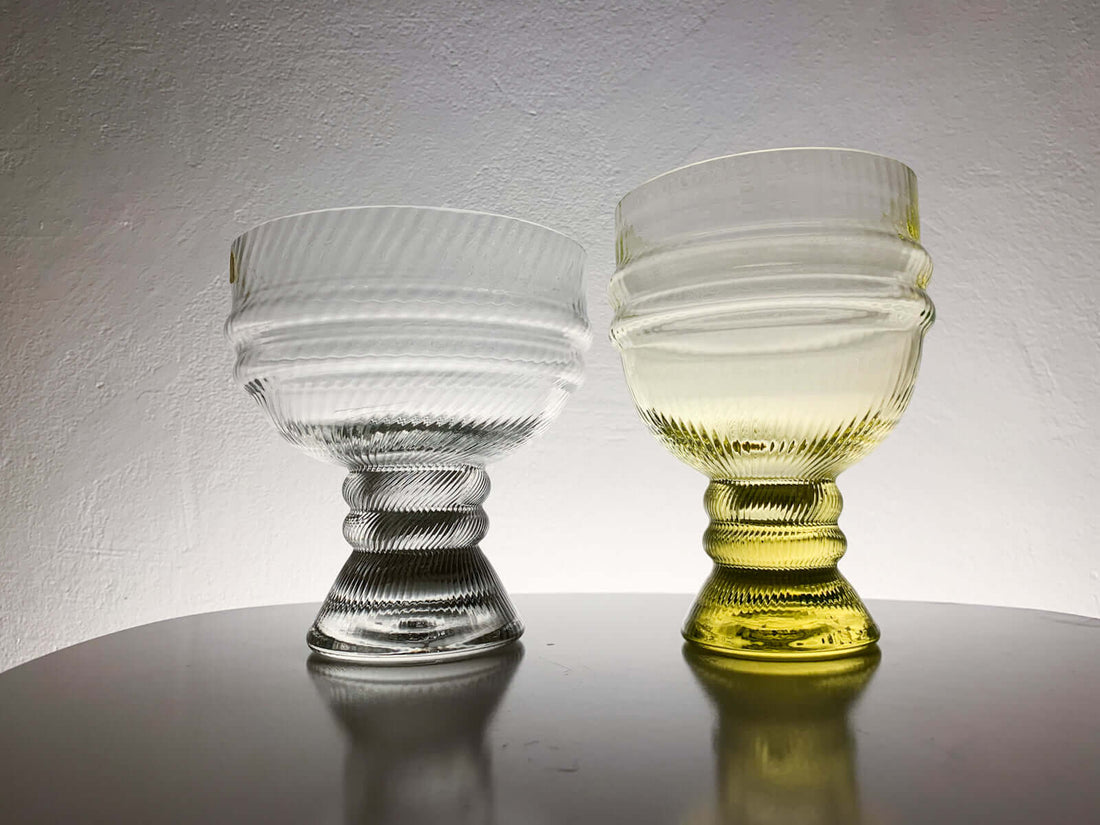
Glass Ceiling Breakers: How Riihimäki’s Women Designers Shaped the Future
When I walk through old factory halls I like to imagine being in Riihimäki in the 1960s, amid the hum of glassblowers and racks of colored vases. At Riihimäen Lasi, something quietly radical was happening: most of the creative forces shaping the factory’s style were women. It wasn’t just a niche, these women were, I believe so, some of the first female designers to make such a mark in glassmaking globally.
A Turning Point After the War
Glassmaking had been part of the town since 1910. But the postwar era saw a shift. In 1949, Helena Tynell and Nanny Still joined the core design team. Their arrival marked a turning point. Soon after, Tamara Aladin came onboard in 1959, followed by others. These women weren’t assistants, but they were named as lead designers, shaping the aesthetics of everything that left the factory.
Shaping Iconic Collections
Helena’s “Sun Bottle” series, those heavy yellow uranium, grass green, clear glass vases, became instant classics and were produced for years. Nanny Still stunned with bold geometric cut outs and playful colors, like her “Harlekiini” tableware broke conventions in 1958. Then Tamara arrived with striking forms like “Carmen,” “Cleopatra” and “Tornado,” their sculptural silhouettes standing out in the 1960s and 1970s.
Quiet Revolution in a Glassworks
It would be easy to imagine this was a small stroke of luck. But the truth is more deliberate. Riihimäki ran open competitions and invested in young talent instead of relying on a handful of male masters. The consistent appointment of women gave the place a different pulse. They were weaving Finnish natural elements and modernist simplicity into glassware that felt both soft and bold, functional and expressive.
Why It Matters Today
Looking back, I see a factory that trusted women with leadership in design long before that became normal. Their pieces aren’t just collectibles, but they’re part of a slow movement toward equality in craftsmanship. Though the original factory closed by 1990, the work of Tynell, Still, and Aladin continues to inspire not only as design objects, but as reminders that change can happen in humble places, quietly but firmly.
Still Telling Stories
Today visitors at the Finnish Glass Museum walk through a space that was once part of the glassworks where these women shaped their creative carriers. The museum holds vases, bottles and bowls that seem to glow with voices from the past, a proof that Riihimäki was more than a factory: it was a stage for early female design leadership.
